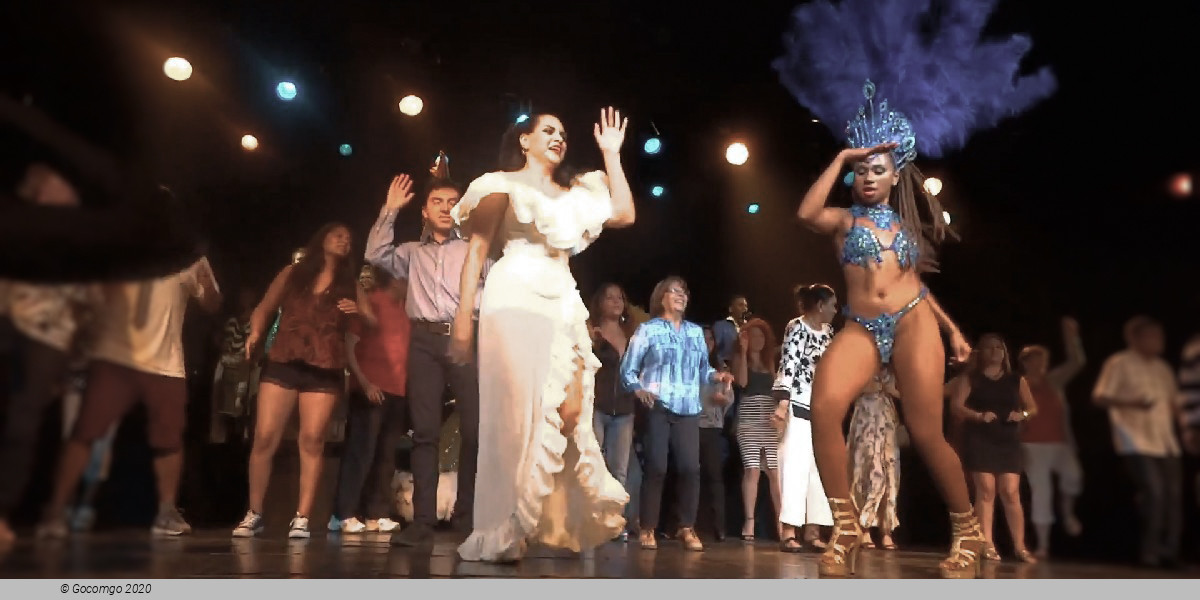Things to do in Rio de Janeiro - January 2026
Things to do in Rio de Janeiro - January 2026

Rio de Janeiro is a sprawling Brazilian city located on the shores of Guanabara Bay. It is world-famous for its beaches, Copacabana and Ipanema, the 38-meter-tall Christ the Redeemer statue crowning Corcovado Mountain, the granite peak of Sugarloaf Mountain, reached by cable car, and the sprawling favelas – shantytowns nestled on the slopes of the surrounding mountains. Rio de Janeiro hosts the world's largest carnival, where visitors can admire brightly decorated floats and samba dancers in outrageous costumes.
Rio de Janeiro is a main cultural hub in Brazil. Its architecture embraces churches and buildings dating from the 16th to the 19th centuries, blending with the world-renowned designs of the 20th century. Rio was home to the Portuguese Imperial family and capital of the country for many years, and was influenced by Portuguese, English, and French architecture.
Rio de Janeiro has inherited a strong cultural role from the past. In the late 19th century, there were sessions held of the first Brazilian film and since then, several production cycles have spread out, eventually placing Rio at the forefront of experimental and national cinema. The Rio de Janeiro International Film Festival has been held annually since 1999.
Rio has many important cultural landmarks, such as the Biblioteca Nacional (National Library), one of the largest libraries in the world with collections totaling more than 9 million items; the Theatro Municipal; the National Museum of Fine Arts; the Carmen Miranda Museum; the Rio de Janeiro Botanical Garden; the Parque Lage; the Quinta da Boa Vista; the Imperial Square; the Brazilian Academy of Letters; the Museu de Arte Moderna do Rio de Janeiro; and the Natural History Museum.
Rio de Janeiro's Theatro Municipal is one of the most attractive buildings in the central area of the city. Home of one of the largest stages in Latin America and one of Brazil's best-known venues for opera, ballet, and classical music, the building was inspired by the Palais Garnier, home of the Paris Opera. Construction of the Theatro Municipal began in 1905 following designs of the architect Francisco Pereira Passos. The statues on the top, of two women representing Poetry and Music, are by Rodolfo Bernardelli, and the interior is rich with furnishings and fine paintings. Inaugurated in 1909, the Teatro Municipal has close to 1,700 seats. Its interior includes turn of the century stained glass from France, ceilings of rose-colored marble and a 1,000 pound crystal bead chandelier surrounded by a painting of the "Dance of the Hours". The exterior walls of the building are dotted with inscriptions bearing the names of famous Brazilians as well as many other international celebrities.
Cidade das Artes (City of Arts) is a cultural complex in Barra da Tijuca in the Southwest Zone of Rio de Janeiro, which was originally planned to open in 2004. Formally known as "Cidade da Música" (City of Music), it was finally inaugurated at the beginning of 2013. The project will host the Brazilian Symphony Orchestra becoming a main center for music as will be the largest modern concert hall in South America and also features a chamber music hall, three theaters, and 12 rehearsal rooms. From the terrace there is a panoramic view of the zone. The building was designed by the French architect Christian de Portzamparc and construction was funded by the city of Rio de Janeiro.
A series of covered theaters collectively known as Lona Cultural, administered by the city's Municipal Secretary of Culture, serve throughout the city as venues for cultural activities such as concerts, plays, workshops, art and craft fairs, and courses.
Every 31 December, 2.5 million people gather at Copacabana Beach to celebrate New Year's in Rio de Janeiro. The crowd, mostly dressed in white, celebrates all night at the hundreds of different shows and events along the beach. It is the second-largest celebration only next to the Carnival. People celebrate the New Year by sharing chilled champagne. It is considered good luck to shake the champagne bottle and spray around at midnight. Chilled champagne adds to the spirit of the festivities.
Rio Carnival is an annual celebration in the Roman Catholic tradition that allows merry-making and red meat consumption before the more sober 40 days of Lent penance which culminates with Holy or Passion Week and Easter. The tradition of Carnaval parades was probably influenced by the French or German courts and the custom was brought by the Portuguese or Brazilian Imperial families who had French and Austrian German ancestors. Up until the time of the marchinhas, the revelry was more of a high class and Caucasian-led event. The influence of the African-Brazilian drums and music became more noticeable from the first half of the 20th century. Rio de Janeiro has many Carnaval choices, including the samba school (Escolas de Samba) parades in the sambadrome exhibition center and the popular blocos de carnaval, street revelry, which parade in almost every corner of the city. In 1840, the first Carnival was celebrated with a masked ball. As years passed, adorned floats and costumed revelers became a tradition among the celebrants. Carnival is known as a historic root of Brazilian music.
Rock in Rio is a music festival conceived by entrepreneur Roberto Medina for the first time in 1985, and since its creation, recognized as the largest music festival in the Latin world and the largest in the world, with 1.5 million people attending the first event, 700,000 attending the second and fourth, about 1.2 million attending the third, and about 350,000 people attending each of the 3 Lisbon events. It was originally organized in Rio de Janeiro, from where the name comes from, has become a world level event and, in 2004, had its first edition abroad in Lisbon, Portugal, before Madrid, Spain and Las Vegas, United States. The festival is considered the eighth best in the world by the specialized site Fling Festival.

